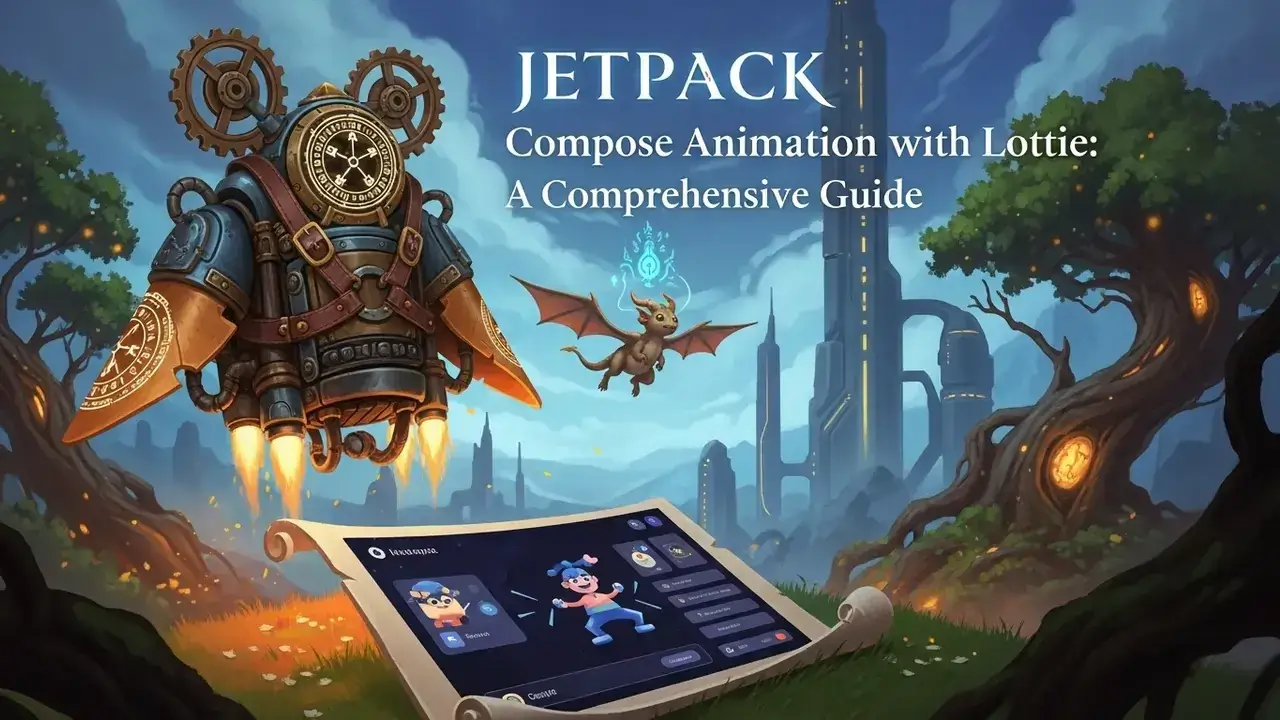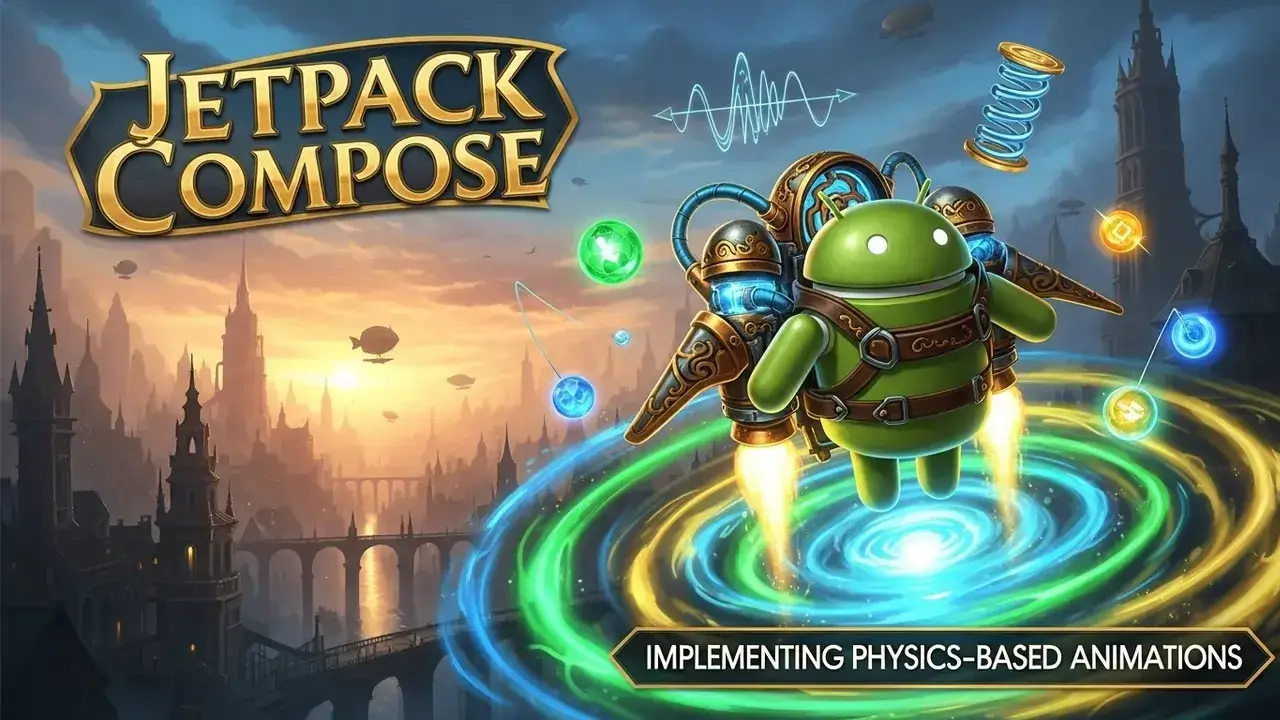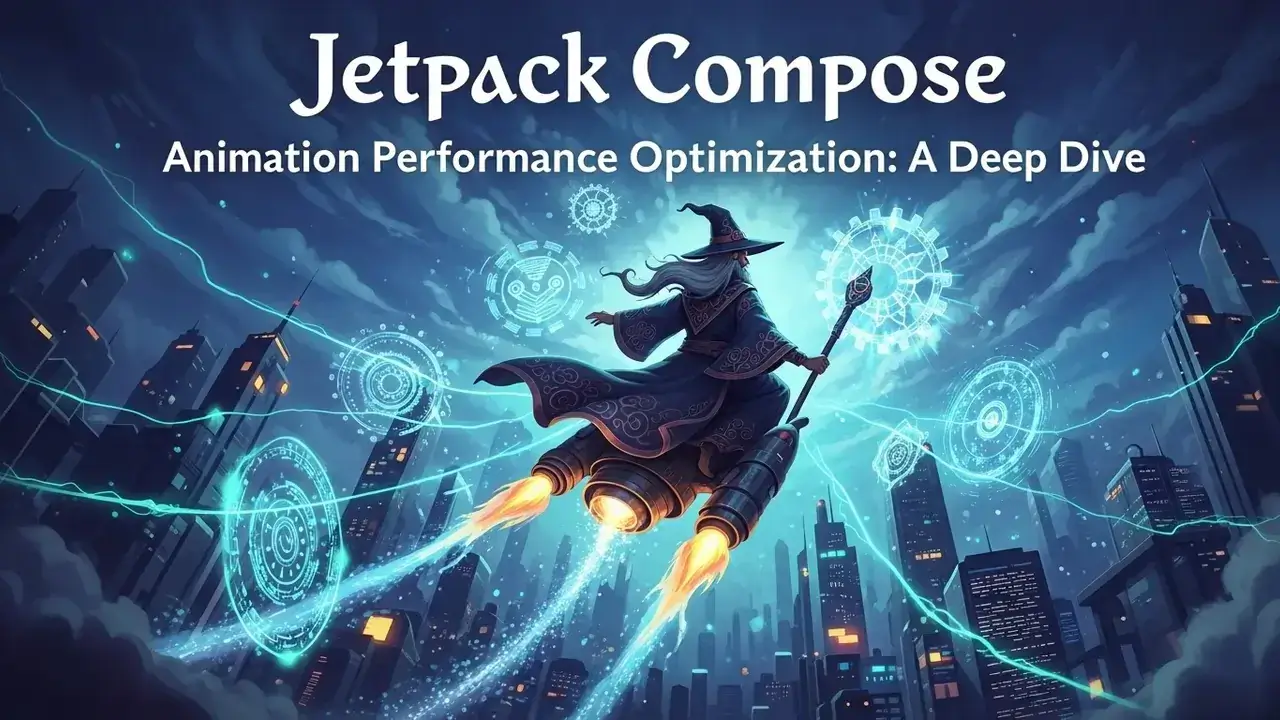Did you know that mobile app users spend nearly 90% of their time in apps, versus on websites? As someone who builds mobile apps, I have seen firsthand how crucial it is to create captivating experiences. When I first started with Jetpack Compose, I wanted to add engaging animations using Lottie. The combination of jetpack compose lottie animation provides a potent way to build user experiences that are both visually appealing and highly effective.
Lottie, which Airbnb originally created, works as a library. It takes animations made in Adobe After Effects and turns them into JSON files. Then, it renders these files directly on mobile devices and websites. This lets you put detailed, vector based animations into your app without the performance issues of older methods like GIFs or image sequences. I will show you how jetpack compose lottie animation works.
This guide will take you through using Lottie in Jetpack Compose. It covers everything from setting up your project to making custom animations and handling user interactions. I will also share my own experiences, point out common mistakes and suggest effective strategies. I depend on this tool when I am developing polished applications for clients, and I think you will find it just as helpful.
Why should you use Lottie for animations in your Jetpack Compose projects?
Performance: Vector animations work better than raster graphics, which means smaller files and smoother playback.
Scalability: Lottie animations easily adjust to any screen size without losing visual quality.
Flexibility: You can change different parts of your animations directly in your Compose code. This includes colors, text and individual keyframes.
Ease of Use: The Lottie library provides a simple way to load and play animations.
Cross Platform: Lottie works on Android, iOS, web platforms and React Native. This lets you reuse animations on many platforms.
Using Lottie with Jetpack Compose
I have used Lottie for animated onboarding, loading indicators and detailed UI transitions. The possibilities are endless. Using jetpack compose lottie animation is easier than ever!
Before you start animating, make sure your project is set up correctly. Here is how to include the necessary dependencies:
Go to your project’s
build.gradle.ktsfile (Module: app).Add the Lottie Compose dependency:
dependencies {implementation("com.airbnb.android:lottie-compose:6.4.0")}Remember to sync your project after adding the dependency.
After you add the dependency, you can start using Lottie in your Compose code.
The LottieAnimation composable is the basis for using Lottie in Compose. It needs a LottieComposition as input, which is the parsed Lottie animation data. This is a basic example of how to load and display a Lottie animation from a JSON file in your res/raw folder:
@Composablefun MyLottieAnimation() { val composition by rememberLottieComposition( LottieCompositionSpec.RawRes(R.raw.my_animation) ) LottieAnimation(composition)}Here is what the code does:
rememberLottieCompositionis a Compose function that loads and parses the Lottie animation from the resource you specify. It usesrememberinside, so the composition only loads once and is cached for later recompositions.LottieCompositionSpec.RawRes(R.raw.my_animation)tells where the Lottie JSON file is. ReplaceR.raw.my_animationwith the correct resource identifier for your animation file.LottieAnimation(composition)renders the animation.
To make sure this works, put your Lottie JSON file in the res/raw directory of your project. If the raw directory does not exist, you will need to create it.
By default, the LottieAnimation composable plays the animation once, from start to finish. The LottieAnimationState lets you control the animation playback.
With LottieAnimationState, you can:
Start and stop the animation.
Loop the animation.
Change the animation speed.
Skip to a certain frame or point in the animation.
This example shows how to loop a Lottie animation:
@Composablefun LoopingLottieAnimation() { val composition by rememberLottieComposition( LottieCompositionSpec.RawRes(R.raw.my_animation) ) val animationState = remember { LottieAnimationState(isPlaying = true, iterations = LottieConstants.IterateForever) } LottieAnimation( composition = composition, state = animationState )}In this example, a LottieAnimationState is created with isPlaying = true and iterations = LottieConstants.IterateForever. This tells the animation to start right away and repeat forever.
You can control the animation playback with the animateTo() function on the LottieAnimationState. To start the animation from the beginning:
animationState.animateTo(0f)To stop the animation:
animationState.animateTo(progress = animationState.progress)Using these methods, you can create interactive animations that respond to user actions or other app events. I have discovered that animateTo() works best for simple animations with only one instance.
Lottie animations can trigger events at certain frames or markers. This allows you to synchronize your Compose code with the animation timeline.
To handle animation events, use the onAnimationFrame callback in the LottieAnimation composable:
@Composablefun MyLottieAnimationWithEvents() { val composition by rememberLottieComposition( LottieCompositionSpec.RawRes(R.raw.my_animation) ) LottieAnimation( composition = composition, progress = { progress -> // This callback is called on every frame of the animation. // You can use the progress value (0f to 1f) to trigger events. if (progress > 0.5f) { // Do something when the animation is 50% complete. } }, )}In the example above, the onAnimationFrame callback happens on each animation frame. The progress parameter shows the current state of the animation, as a value between 0f and 1f. You can use this value to trigger events at certain points in the animation.
For more complex events, define markers in your After Effects animation. Then, use the getMarkerFrame() function on the LottieComposition to find the frame number for a marker. Finally, use the onAnimationFrame callback to trigger events when the animation reaches that frame.
A big benefit of Lottie is that you can change animations dynamically with your code. During runtime, you can change colors, edit text and adjust individual keyframes.
To customize a Lottie animation, use the LottieDynamicProperties class. It lets you define a set of properties that you can update when needed.
This is how to change the color of a layer in a Lottie animation:
@Composablefun CustomizableLottieAnimation() { val composition by rememberLottieComposition( LottieCompositionSpec.RawRes(R.raw.my_animation) )In this example, a ColorProvider is created that uses the color red. Then, a LottieDynamicProperties object is created. It specifies that the color for the layer called “Fill 1” should be updated with the value from the ColorProvider. This LottieDynamicProperties object is then passed to the LottieAnimation composable.
The KeyPath shows the path to the property you want to update. The "" wildcard selects all layers in the animation. For specific layers or properties, use more specific key paths.
I have used this technique to make themed animations that adapt to user preferences. For example, I can change the colors in an animation based on the user’s chosen theme. Mastering jetpack compose lottie animation customization is essential.
Keep these tips in mind when using Lottie in your Jetpack Compose projects:
Optimize Your Animations: Keep animations simple to improve performance. Avoid too many layers or complex effects.
Use Vector Graphics: Lottie is made for vector graphics. Avoid using raster images in your animations when possible.
Test on Different Devices: Test your animations on different devices to make sure they work correctly.
Use Caching: Cache your Lottie compositions so they do not reload each time they appear. The
rememberLottieCompositionfunction automatically handles caching.Handle Errors: Use error handling to manage any problems that might happen when loading or playing animations.
Following these guidelines will help you make better, high performance animations. As a result, you will improve the user experience in your Jetpack Compose applications. Testing on older devices can show performance issues in detailed animations.
Here are some common problems that happen when using Lottie with Jetpack Compose, along with solutions:
Animation Not Displaying: Check that your Lottie JSON file is in the right directory (
res/raw) and that the resource identifier is correct. Also, make sure your dependencies have been added correctly.Animation Lagging: Improve animation performance by using fewer layers and effects. Also, enable hardware acceleration.
Animation Not Looping: Make sure the
iterationsparameter of theLottieAnimationStateis set toLottieConstants.IterateForever.Customization Not Working: Double check that your key paths are correct and that you are using the right value providers.
If problems continue, see the Lottie documentation or look for solutions online. The Airbnb Lottie Android community is large and helpful.
Adding jetpack compose lottie animation to your Android applications is a great way to improve their visuals and the overall user experience. Lottie is simple, adaptable and efficient, so it is a great choice for many uses. These range from basic loading indicators to complex UI transitions. By using the techniques and tips I have shared, you are ready to create impressive animations that will engage your users. Try different things and enjoy making your applications more polished and professional with animation.
Reference
Getting Started with dotLottie Player for Android






Comments